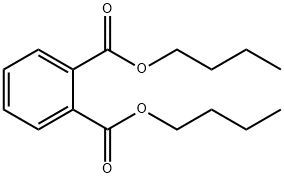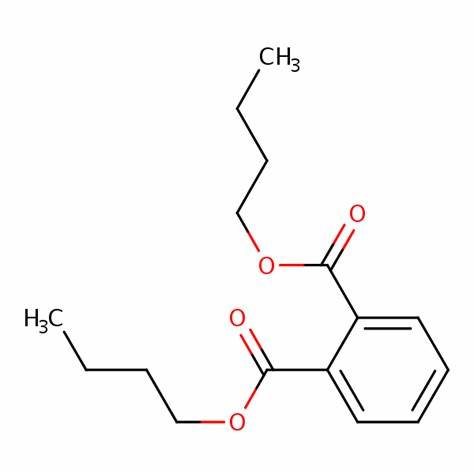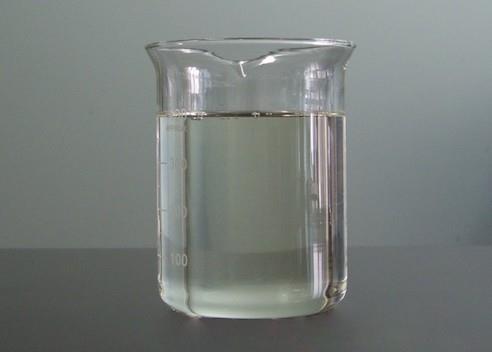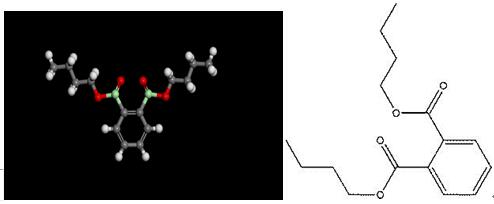Dibutyl Phthalate: Applications as Plasticizer and Antiandrogenic Effects
General Description
Dibutyl phthalate, widely used as a plasticizer in various industries, demonstrates significant antiandrogenic effects, particularly affecting embryonic development and reproductive outcomes. Studies on pregnant rats exposed to Dibutyl phthalate during early gestation revealed adverse effects on maternal health and fetal development. Maternal exposure led to reduced weight gain and food consumption, lower pregnancy rates, and decreased fetal weight. Moreover, Dibutyl phthalate exposure increased preimplantation and postimplantation loss, indicating heightened vulnerability during postimplantation compared to preimplantation. Experiments on pseudopregnant rats showed suppressed uterine decidualization, correlating with increased embryonic loss. Overall, Dibutyl phthalate exhibits antiandrogenic effects impacting reproductive capabilities and embryonic development.

Figure 1. Dibutyl Phthalate
Applications as Plasticizer
Dibutyl phthalate is a commonly used plasticizer in the manufacturing industry due to its versatile applications and desirable properties. As a plasticizer, DBP plays a crucial role in modifying the properties of polymers, particularly polyvinyl chloride (PVC), to make them more flexible, durable, and easier to process. Its application as a plasticizer can be categorized into several key areas. Firstly, Dibutyl phthalate is extensively employed in the production of PVC products, including pipes, cables, flooring, and profiles. By incorporating DBP into PVC formulations, manufacturers can effectively reduce the rigidity of the polymer matrix, resulting in products with enhanced flexibility and resilience. This is particularly advantageous in applications where PVC materials need to conform to curved surfaces or withstand repeated bending without cracking or breaking Secondly, Dibutyl phthalate serves as a crucial component in the formulation of flexible PVC films and sheets used in various industries such as packaging, automotive, and construction. These films and sheets, when plasticized with DBP, exhibit excellent elongation properties, tear resistance, and low-temperature flexibility, making them suitable for diverse applications ranging from food packaging to automotive upholstery. Moreover, Dibutyl phthalate finds utility in the production of synthetic leather and coated fabrics, where it imparts softness, pliability, and abrasion resistance to the final products. Its ability to enhance the workability and processability of polymer blends makes it a preferred choice for manufacturers seeking to optimize the performance and aesthetics of their synthetic materials. In summary, Dibutyl phthalate plays a vital role as a plasticizer in various industrial sectors, enabling the production of flexible, durable, and high-performance polymer materials such as PVC products, films, sheets, synthetic leather, and coated fabrics. Its versatility and effectiveness make it a cornerstone ingredient in the formulation of plasticized polymers, contributing to the advancement of numerous industries worldwide. 1
Antiandrogenic Effects
Dibutyl phthalate, a chemical compound commonly utilized in various industrial applications, has been found to exert antiandrogenic effects, particularly impacting embryonic development and reproductive outcomes. Studies conducted on pregnant rats exposed to varying doses of dibutyl phthalate during early gestation have revealed significant adverse effects on maternal health and fetal development. Maternal exposure to dibutyl phthalate during the initial stages of pregnancy, administered through gavage at doses ranging from 250 to 1500 mg/kg, resulted in notable reproductive impairments. Maternal body weight gain and food consumption were significantly reduced at doses of 500 mg/kg and higher, indicating potential toxicity. Moreover, the pregnancy rate was significantly lowered at the highest doses of 1250 and 1500 mg/kg, while fetal weight was notably decreased at doses of 500 mg/kg and above. Furthermore, exposure to dibutyl phthalate during early pregnancy led to increased incidences of preimplantation and postimplantation loss, suggesting a higher susceptibility of embryos during the postimplantation period to the deleterious effects of dibutyl phthalate compared to the preimplantation period. The adverse effects of dibutyl phthalate on reproductive capability were further elucidated through experiments on pseudopregnant rats. Exposure during pseudopregnancy resulted in significant suppression of uterine decidualization, indicating impairment of uterine function. This impairment correlated with increased early embryonic loss observed in pregnant rats exposed to dibutyl phthalate, suggesting that it exerts its antiandrogenic effects, at least in part, through adverse impacts on uterine decidualization and function. In conclusion, the antiandrogenic effects of dibutyl phthalate on embryonic development and reproductive outcomes underscore the importance of evaluating its potential risks and implementing measures to mitigate exposure in pregnant individuals to safeguard maternal and fetal health. 2
Reference
1. Dibutyl Phthalate. National Center for Biotechnology Information. 2024; PubChem Compound Summary for CID 3026.
2. Ema M. Antiandrogenic effects of dibutyl phthalate and its metabolite, monobutyl phthalate, in rats. Congenit Anom (Kyoto). 2002; 42(4): 297-308.
Related articles And Qustion
Lastest Price from Dibutyl phthalate manufacturers

US $0.00/kg2025-06-23
- CAS:
- 84-74-2
- Min. Order:
- 1000kg
- Purity:
- i
- Supply Ability:
- 60tons

US $0.00/Kg/Drum2025-04-21
- CAS:
- 84-74-2
- Min. Order:
- 200KG
- Purity:
- 99%min
- Supply Ability:
- 500tons/month





